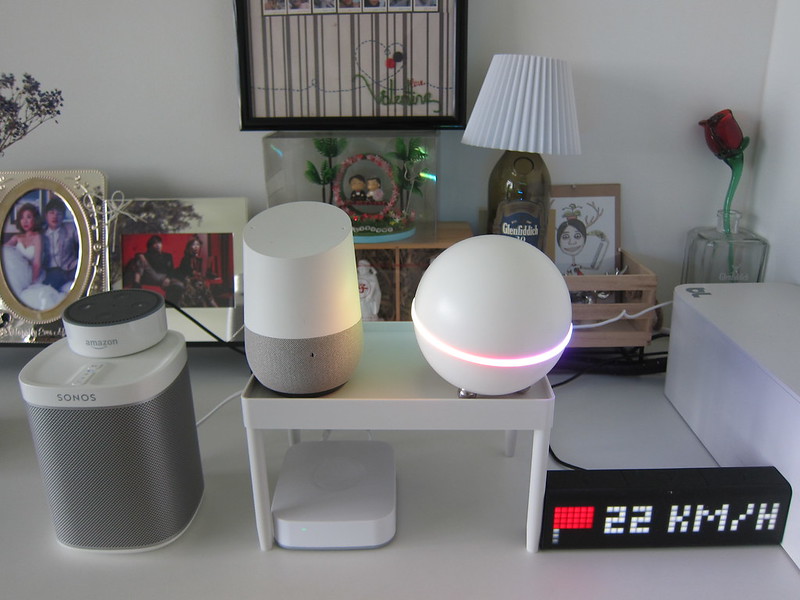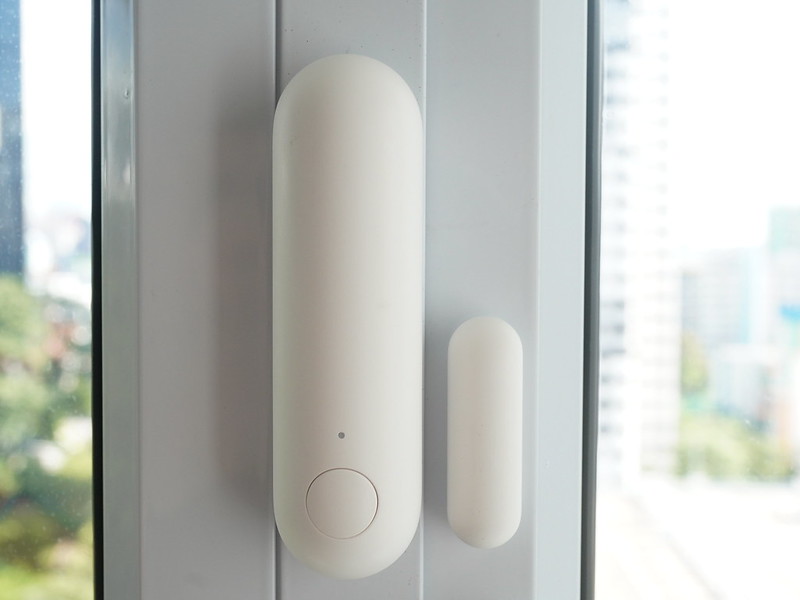Homey Review
This is the second part of my Homey Review. Do check out the first part, Homey Review – Unboxing & Setup, if you have not done so.
Homey Desktop App
Homey Desktop app is a beautiful designed app. In my opinion, it has the best UI/UX for a smart home device.
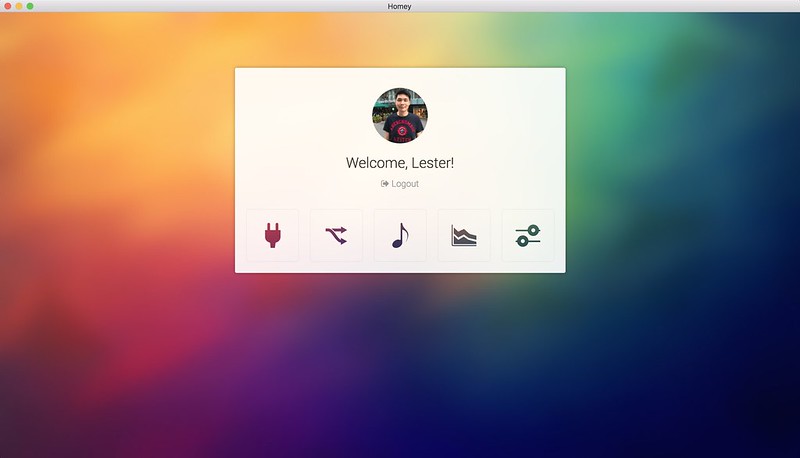
It is not written natively. It is written in Node.js and packaged as an Electron app.
The desktop app is split into four sections, Devices, Flow, Music, Insights, and Settings.
The Devices section is where you add/remove your devices to/from Homey. Your devices are associated with zones. Zones are areas in your house, like Living Room, Computer Room, Kitchen. etc.
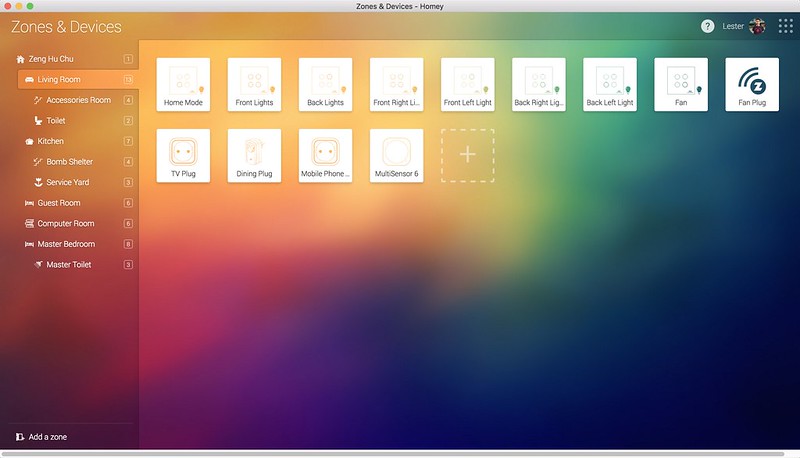
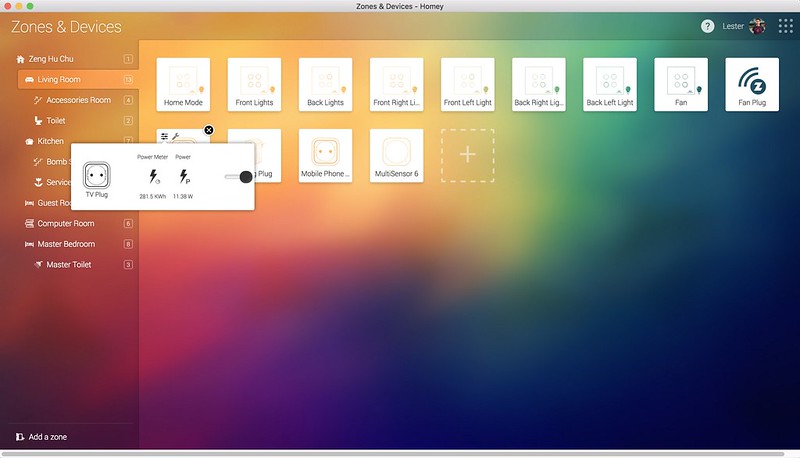
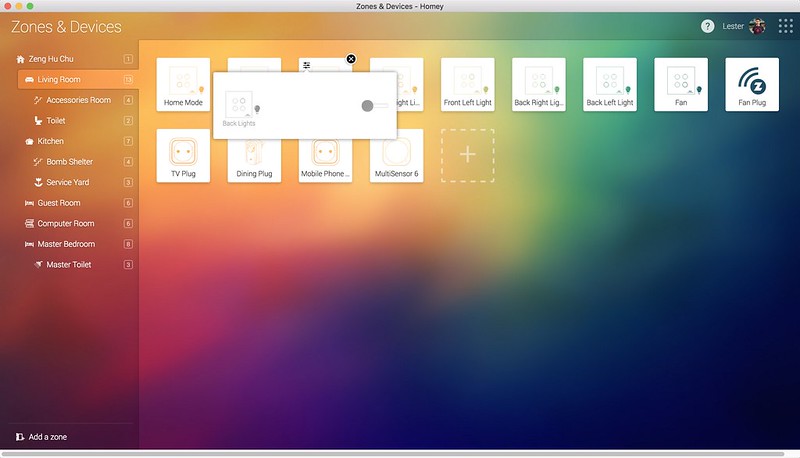
Homey’s home automation system is called Flow. Flow works like “When something happened, and this and that is true, then do that.”. You can use it to bridge multiple wireless technologies together which is not possible on a standalone Z-Wave hub. For example, you can set to automatically turn on your Z-Wave lights and Sonos speakers when you reached home.
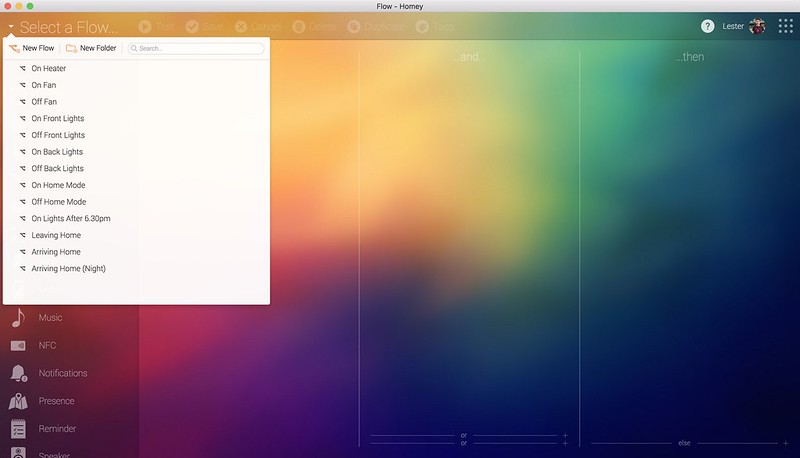
The next section is Music. Since Homey has an internal speaker, you can use it to play music. Of course, you need to install the relevant streaming app from Homey App Store.

Insights section as the name suggests, allows you to monitor the usage of your device graphically. It will graph your device usage time, power consumption for power switches, and temperatures for temperature sensors, etc.

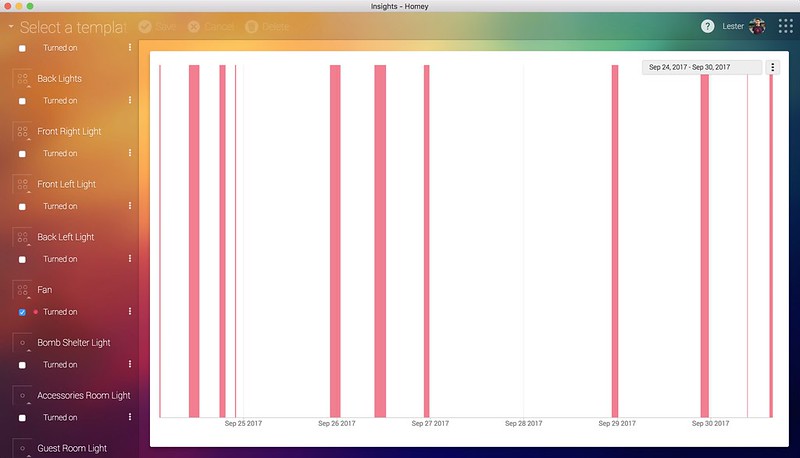
The Settings section is pretty self-explanatory. The weird part is that Homey Apps come under this section. I think Apps should be a section by itself.

To install Apps on Homey, you need to use your browser and visit apps.athom.com. You cannot do it within the desktop app. I find this experience very disjointed.
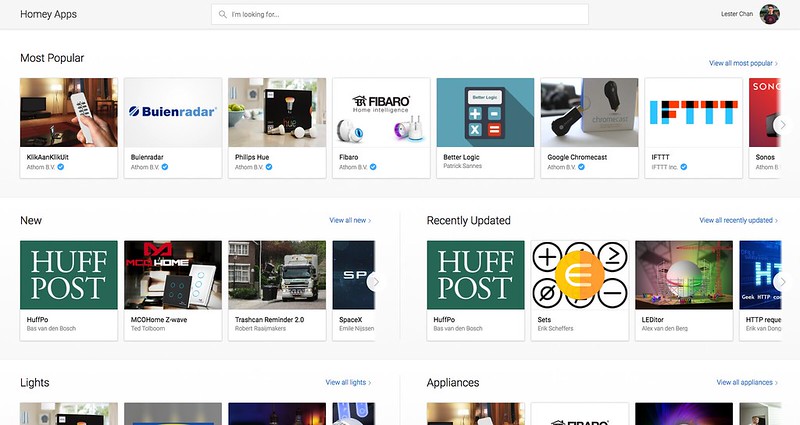
Pairing Process
The pairing process for Homey is swift. I am very impressed. It makes Fibaro pairing process feels like a snail.
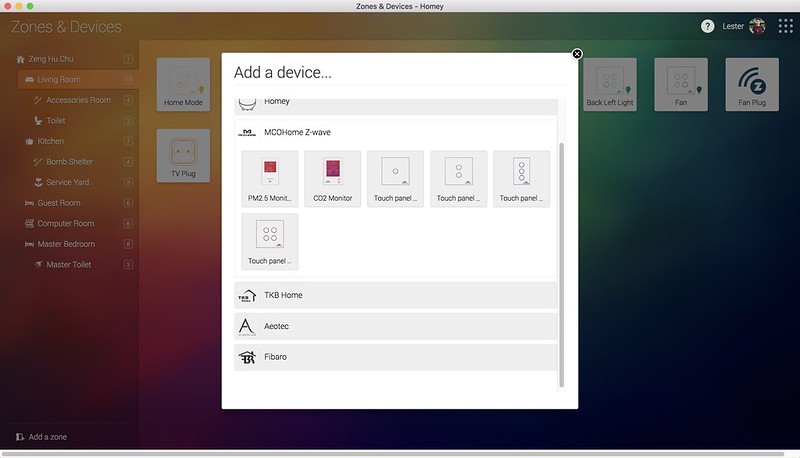
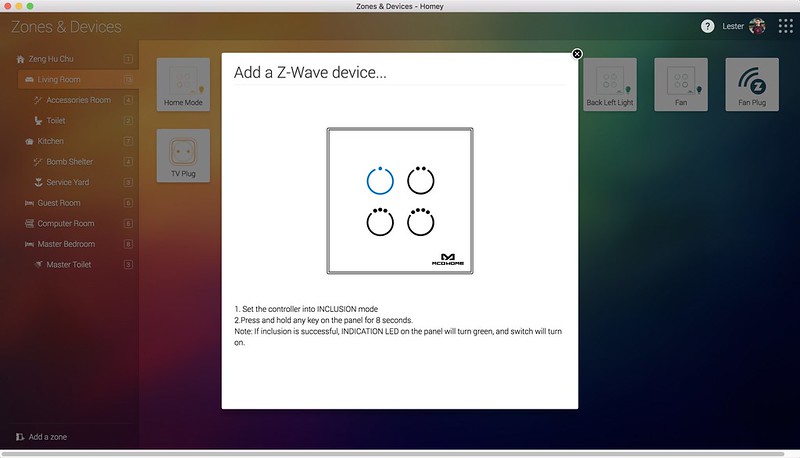
I realized once you start adding more z-wave devices (I got about 55 z-wave devices in Homey), the z-wave network will be congested. You will begin having pairing problems, especially when pairing a battery powered z-wave device.
When pairing, it will go from Node Found -> Node Identified -> Could not reach the device anymore. And the best part is that I did not even move the pairing device!
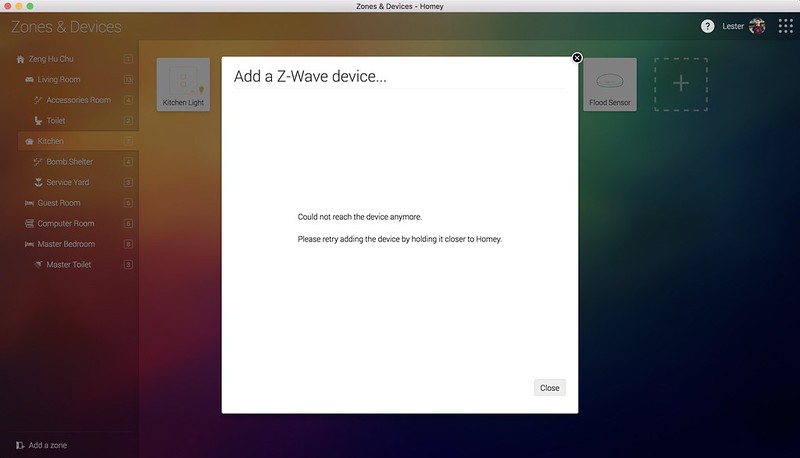
I guess because of z-wave network congestion; it will take more time to pair the battery-powered device and hence the device times out.
I still have one Fibaro Smoke Sensor that no matter what I do (including factory resetting it), it refuses to pair. I got the same message as above when I tried it for like ten times, and I gave up.
Flow
Flow is probably one of my favorite features in Homey. It is so easy to use, and the UX/UI is lightyears ahead of Fibaro, Vera, and even SmartThings.
Each Flow executes almost instantly without any visible lag time, unlike Fibaro where there is a lag time of a few seconds.
I have a couple of flows like for example to turn on my lights if I am at home and the time is after 6.30pm.

The presence detection of Homey is pretty accurate, and I can rely on it to determine whether I am at home. I can’t say the same for Fibaro, and hence while I am using Fibaro, I used IFTTT to overcome this.
My presence flows go along the lines of when I reached home, I want selected devices to be turned on automatically, and when I leave the house, I want those devices to be turned off.
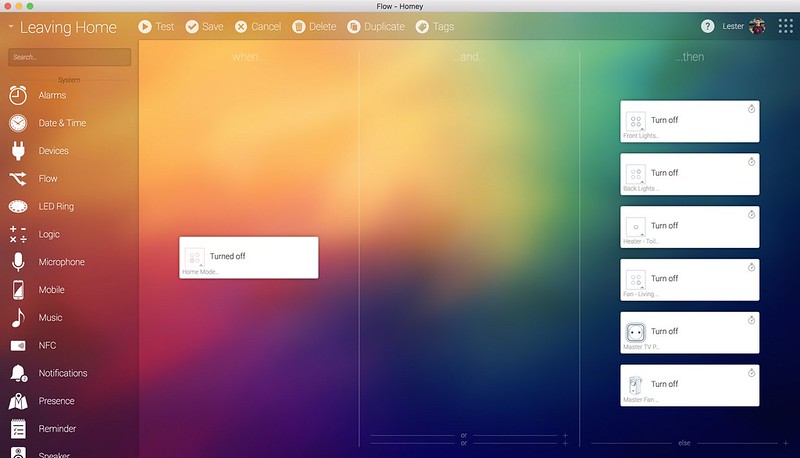
On top of Flow, Homey supports IFTTT as well. So you can link external services to execute a Flow on Homey.
Settings
If you find the Homey’s LED lights very distracting when placed in the living room, you can reduce the brightness or disable it altogether.
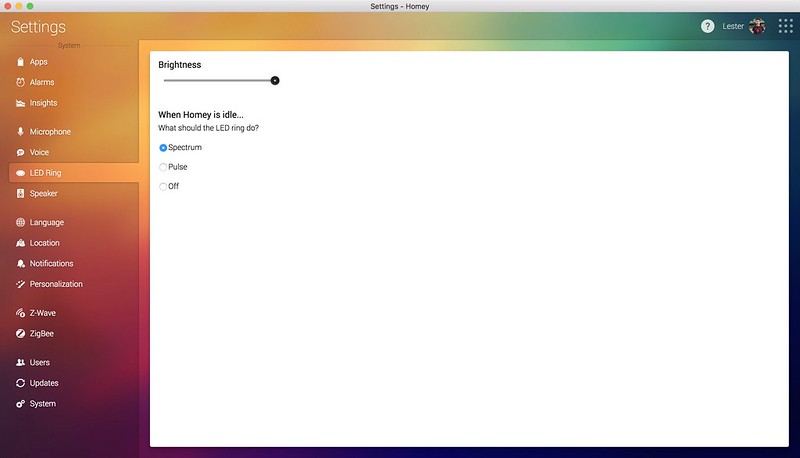
The date and time of my Homey were in UTC when I first setup Homey despite my location was in Singapore. You might need to choose the location manually, and reboot Homey after that.
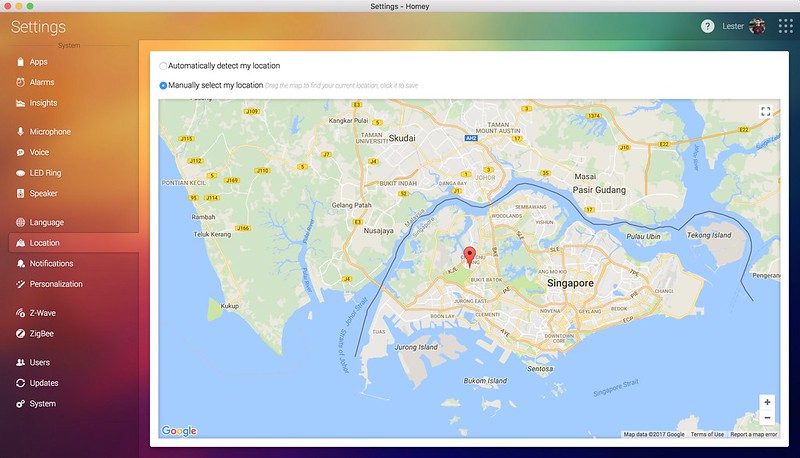
You can check whether the date and time of your Homey are correct by going to Settings -> System -> Stuff for geeks. Look out for the JSON field date_human.
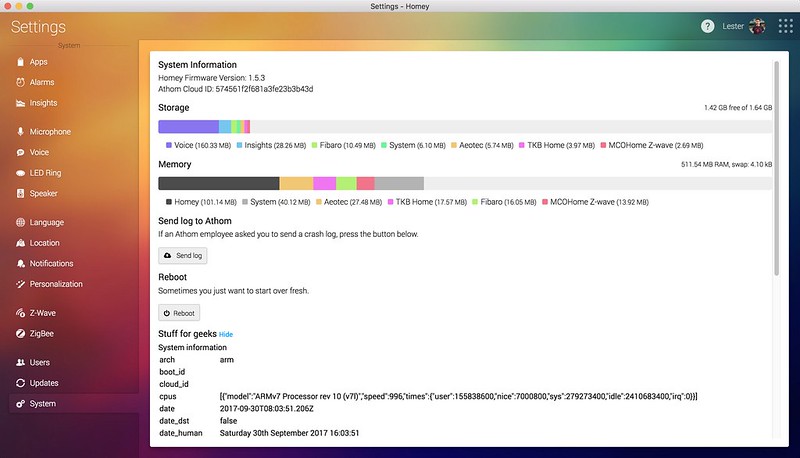
Voice/AI Assistant
Homey supports Amazon Alexa, Google Assistant and, Facebook Messenger
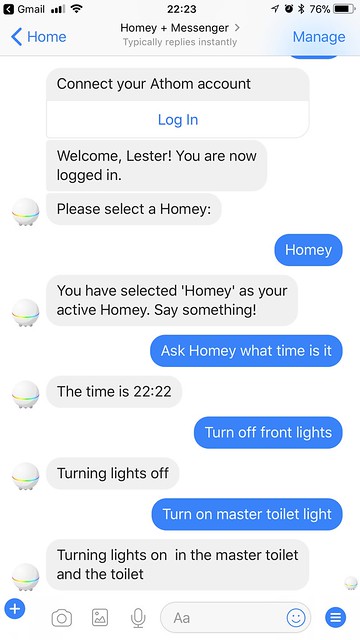
For Amazon Alexa, you have to install the Homey Skills. Then, you have to invoke it by calling: “Alexa, ask Homey to turn on the lights”. You can’t just say Alexa, turn on the lights.
For Google Assistant, this is the part where it gets very confusing. It supports Google Assistant as in the app and not Google Home. I made the mistake of trying to find out how do I install the Homey App on my Google Home.
You are supposed to link Google Assistant with your Homey and only Android phones can do that. Visiting the Homey Google Assistant link on iOS devices does nothing.
Also, your Android phone needs to be in English (US) locale. You can change it in your phone settings. Other locales will not work as I have tested it with English (Singapore).
Once you have linked up Homey with Google Assistant, that is when you can use your Google Home to invoke Homey. Similar to Amazon Alexa, you need to invoke it by calling: “OK Google, ask Homey to turn on the lights.”
Unfortunately, that is not the case for me. After linking up, I could not get it to work. As you can see from the screenshot below, I encountered an unknown error.

Apparently, I was missing a step where I need to say “Ok Google, tell Homey to select a Homey”. You can replace “Homey” with the name of your Homey, mine was the default, and hence it is Homey.
Once I did that, it works!
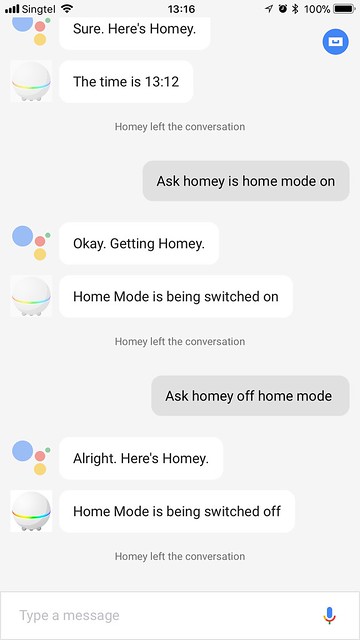
HA Bridge
Personally, I find the “Ask Homey” part pretty troublesome. So I emulated Philips Hue lights using HA Bridge. Now, I can just say, “Alexa, turn on the lights” and it will call HA Bridge, and HA Bridge will call Homey via a REST API.
The above will only work for Amazon Echo as it will scan your local network for Philips Hue compatible lights. So an emulation will work.
It will not work with Google Home as it uses the cloud version of Philips Hue.
To workaround this, what I do is to let my SmartThings detect my Philips Hue emulation within my local network and then link my SmartThings with Google Home. In this case, when I say “Ok Google, turn on the lights”, it does Google Home -> SmartThings -> HA Bridge -> Homey.
HomeKit
There are two HomeKit apps in Homey. HomeyKit by swttt and HomeKit by sprut. HomeKit by sprut is a fork of HomeyKit by swttt and both of them are built on top of Homekit Accessory Server (HAS).
I have seen mixed reviews for both apps in the comments section and in the forums for the app. I would probably wait for it to stabilize first before attempting to use it.
If you want to give HomeKit a try, I would recommend HomeKit by sprut as the developer is more active.
REST API
Like most smart home hubs, Homey has an API as well. The REST API is undocumented as it is still in beta stages, so use it at your own risk.
To list all your devices, just do a GET to http://<HomeyIP>/api/manager/devices/device/.
To get an individual device, do a GET to http://<HomeyIP>/api/manager/devices/device/<DeviceID>.
To turn a device on, do a PUT to http://<HomeyIP>/api/manager/devices/device/<DeviceID>/state with the body {"onoff": true} and vice versa, to turn it off, do a PUT to http://<HomeyIP>/api/manager/devices/device/<DeviceID>/state with the body {"onoff": false}. Your content type has to be application/json.
Z-Wave Graph
One of my favorite z-wave related features of Homey is the Z-Wave Network Graph. The graph shows how your z-wave devices are connected with one another. It makes debugging easier if you happen to have an orphaned z-wave device.


iOS/Android App
It seems Homey is a very generic name. I could not find the app when I search for Homey as there are too many results. I have to search for Homey Athom.
Homey’s iOS app is available on App Store and Homey’s Android App is available on Google Play.
The iOS app is not a universal app, and hence it is not available for iPad. Despite that, you still can install an iPhone app onto an iPad, but it will look weird. I did that for Instagram.
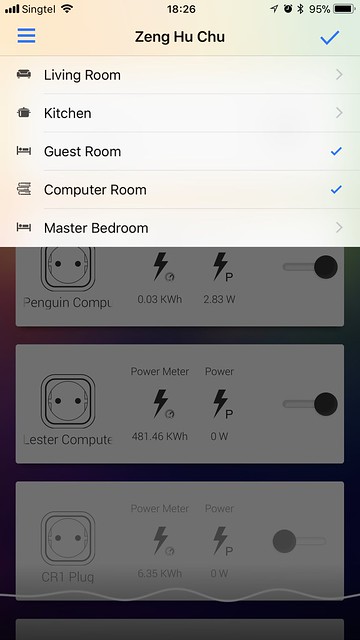

The mobile app is pretty basic. It is just a remote control for you to control your devices. You can see all your devices there with some minor details, and you can turn them on or off.
There is also a Music and an Alarms section which I don’t use it personally. The Music section controls the music on your Homey and the Alarms section allows you to use your Homey as an alarm clock.


As mentioned earlier, the presence detection of Homey is pretty accurate. That is because it uses the geofencing feature in your mobile phone. You can even set the geofencing radius.

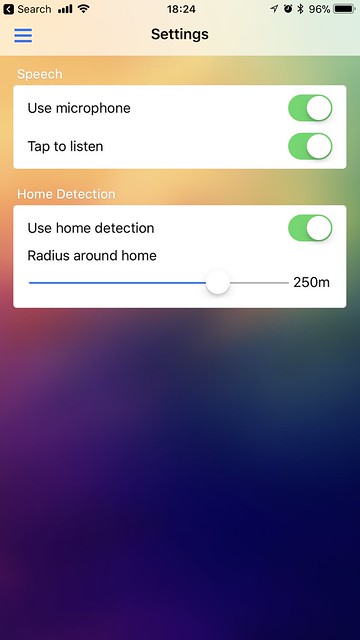
I read on Athomy’s Blog that the mobile app is being re-written to allow you to do more things on it rather than just being a remote control. So stay tuned. The app is now out. It is called Homey (Preview) as it is still in early stages of development. You can download on Google Play or request for a TestFlight access on iOS.
Conclusion
My primary complaint of Homey is the z-wave pairing issue. It gets frustrating and everytime you failed to pair, you will have to remove the device and re-pair it again. Imagine going through this process at least two times for every battery-powered z-wave device.
Another thing to note is that Homey doesn’t have a backup and restore feature. It is on their high priority list, so I guess it will be out before the end of the year. So till then, if your Homey crashes, you will have to re-add all your devices manually. And that can be a PITA.
If you are worried about devices compatibility, rest assured that as the community matures, there will be more support for devices.
My z-wave devices consist of Fibaro, Aeotec, MCO Home, and TKB. All of them are compatible with Homey, and I have no issues using them.
Despite some flaws mentioned above, I still think Homey is probably the best smart home hub out there, and it is reasonably priced. I would recommend this over Fibaro or SmartThings. I have not used Vera before, so I can’t pass judgment on that.
You can buy Homey from H4SH for S$549 (and no, this is not a sponsored review).
